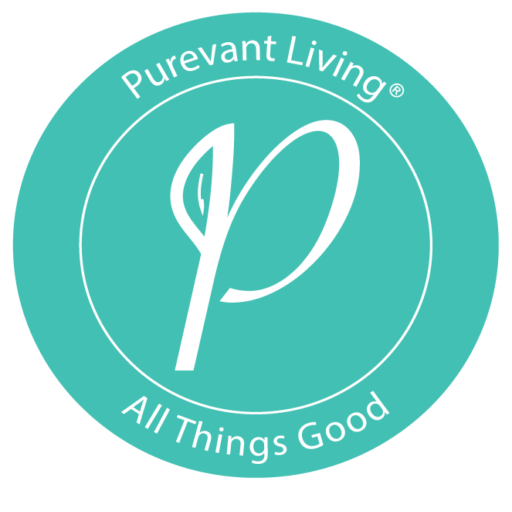Residential energy usage in the United States contributes to roughly 20% of greenhouse gas emissions. Considering recent global events, meeting the increased energy demands is going to be challenging. As the climate continues to heat up escalating higher levels of uncertainty, homeowners around the world are faced with a myriad of potential challenges to their homes that are tied to changing weather patterns such as increased moisture, stronger storms, wind gusts, larger hail, and greater air temperature extremes (i.e. from polar vortexes to 100+ degree heat indexes). Many residential properties, especially older homes, are not prepared for the ecological challenges of the future. For instance, according to the North American Insulation Manufacturers Association, roughly 90% of existing homes are under-insulated, causing energy waste while decreasing comfort for the homeowners.
As a homeowner, you can be part of the climate solution at a global scale by choosing green improvements, switching to efficient housing practices and renewable energy. Below are additional reasons why many homeowners are acting now and adopting eco-friendly home actions.
Resale Value Increase
According to Freddie Mac research, energy-efficient home upgrades lead to increased value of your home and show 2.7% higher sale rate compared to the standard home. Lenders and other mortgage professionals are now incorporating the value of energy efficiency into mortgage underwriting practices.
Energy Cost Volatility
As of summer of 2022, US energy prices have skyrocketed to levels consumers have never experienced, and all indicators point to continued increases in energy prices (as the utility companies are making a transition from coal and gas-produced energy to renewables). By using your home to generate energy, you can better manage the volatility of the energy market.
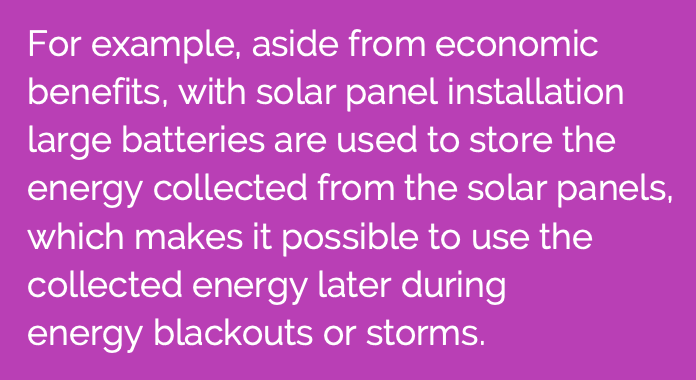
Environmental Impact Reduction
Turning your existing home into an ‘eco-home’ through sustainable energy use produces fewer carbon emissions and lessens the impact of new construction on the global non-renewable resources.
Renovating Existing Homes Allows For Increased Adoption Of Green Materials
Eco-friendly building materials are made using sustainably forested or environmentally engineered products, upcycled and/or recycled components, and overall use less chemicals, water, and fuel.
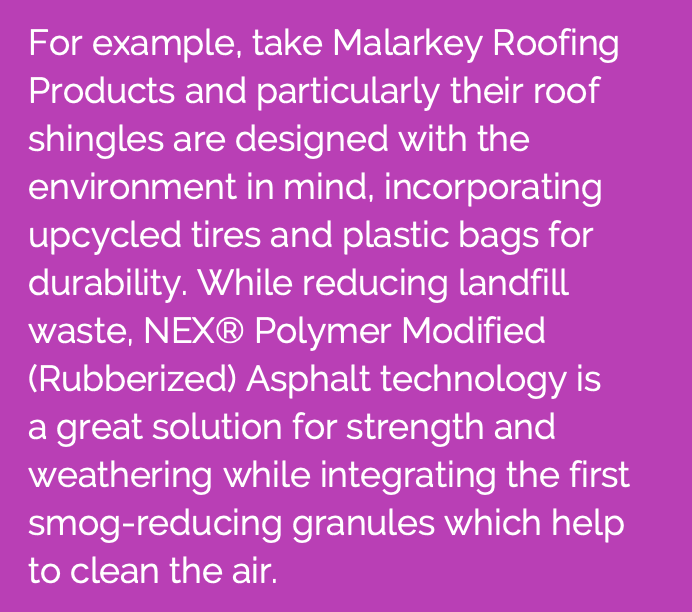
Health and Safety Benefits
According to the EPA assessment, indoor air can be 2-5 times more polluted than the air outdoors due to chemical byproducts used in building materials for your home. Choosing non-toxic and products made from
ecycled materials ensures that fewer pollutants cycle through the air in your home.
Feeling overwhelmed, and wondering how you can prepare for efficient grid decarbonization, energy retrofits, and overall reduction of in-home energy use?
We are here to help, below is a list of items to start you on the greening of your home.
1. First, have a Home Energy Score™ certified assessor complete an energy audit on your home. You need to know what the performance of your home looks like before you begin to invest in energy efficient upgrades.
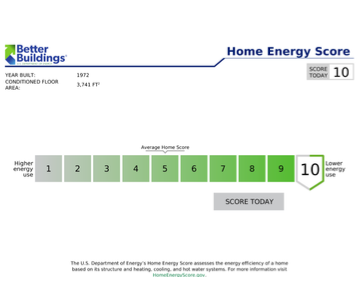
Looking at the Geason-Bauer home energy score of 10 (which means that their home is in the top 10% of all US homes based on their energy use), provides a great example of how multiple solutions can work in tandem to the benefit of our pocketbook and the environment.
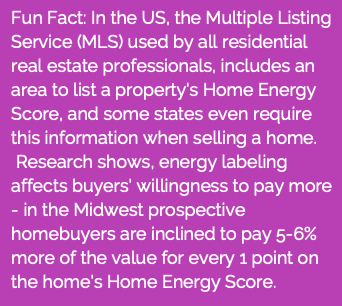
2. Save up to 20% on your cooling bill by insulation and weatherization with caulking, weather stripping, and attic insulation. According to Energy.gov, insulating material is measured in terms of its thermal resistance or R-value. R-Value depends on the type of insulation, its age, thickness and density, moisture accumulation, and whether it covers a wall or ceiling.
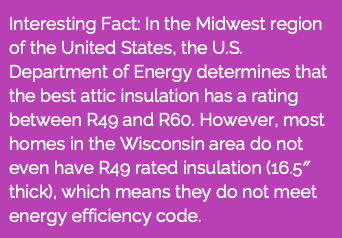
3. When major household appliances come to the end of their life, replace them with Energy Star rated appliances, which can save you between 10% – 50% on your energy use. Choose to buy products that have a higher SEER (seasonal energy efficiency ratio), such as for your furnace
and air conditioning units. Keep your household mechanicals in good working order with yearly servicing of your HVAC system and regular filter replacement.
4. Other actions to help you save energy – water in your home! Consider switching to Energy Star rated and water-efficient appliances that perform better and use less energy and water (labeled as ENERGY STAR® for washers and dryers, refrigerators and dishwashers, and the WaterSense for showerheads, faucets and toilets). Also, installing a tankless hot water heater may be especially useful if you have a two-story home with bathrooms upstairs, as it allows heated water to flow more quickly to the taps.

While some eco-friendly improvements are costly, below are easy low-cost options every homeowner can do:
– Switch to the Smart Thermostat that learns your household patterns and adjust heating and cooling accordingly, while saving 26% on your bill, (unlike a programmable thermostat that only saves energy when programmed correctly).
– Having your electronics plugged in even when turned off or on sleep mode can cost you $100 extra in utility bills per year. Plugging devices into a standby smart power strip ensures
your electronics consume energy only when you’re using them.
– Replace incandescent bulbs with LED for longer-lasting results while using up to 75% less energy. Besides, due to LED’s high efficiency and directional nature, it makes them perfect for small spaces, such as countertops, hallways, and closets.
– Invest in energy-efficient blinds, shades, and curtains to dramatically reduce your home heating and cooling costs.
If you want to learn more about actions taken in an existing older home by the President of Evolution Marketing and her family, please go to greenmkting.com/ecohome. The resource page on the Evolution Marketing website streamlines locally relevant information in both English and Spanish that could help on your journey to becoming a Green homeowner. Maryna is an Extern in Sustainability at Evolution Marketing and she co-authored this article with green homeowner Lisa Geason-Bauer, who is also the president of Evolution Marketing. Evolution Marketing is a women-owned Certified B Corporation that offers sustainability consulting and marketing communications services.
Download your very own Eco-Home checklist here! To see the full magazine of Person & Planet where this article is featured, you can find the digital version here and the print version here.
Sources:
MLS.com | Multiple Listing Service is a free search to find real estate listings
Malarkeyroofing.com | Malarkey Roofing Products are sustainable roofing materials
Insulationinstitute.org | North American Insulation Manufacturers Association | non-profit trade association for the North American manufacturers of insulation products
Freddiemac.com | original research and analysis on housing trends, the economy and the mortgage market
Energy.gov | U.S. Department of Energy ensures security and prosperity through science and technology solutions
- “Energy Savings”, Energy Department, https://www.energy.gov/energysaver/led-lighting
- “Insulation”, Energy Department, https://www.energy.gov/energysaver/insulation
- “Save Energy in Your Home With a Smart Power Strip”, Energy Department, https://www.energy.gov/energysaver/articles/save-energy-your-household-smart-power-strip
EPA.gov | U. S. Environmental Protection Agency that protects human health and natural environment – Washington, D.C.
- “WaterSense Products”, US EPA, https://www.epa.gov/watersense/watersense-products
EPA Assessment | official summary and analysis of air quality provided by EPA
Home Energy Score | report by the U.S. Department of Energy that estimates home energy use, associated costs; provides energy solutions to cost-effectively improve the home’s efficiency.
Lisa Geason-Bauer, “Sustainable Home Renovations Resources”, Evolution Marketing, https://greenmkting.com/ecohome
Seasonal Energy Efficiency Ratio (SEE) – efficiency ratio defined by the Air Conditioning, Heating, and Refrigeration Institute,
https://www.ahrinet.org/homeowners/save-energy/seasonal-energy-efficiency-ratio
Energystar.gov | government-backed certified energy efficient products that help consumers save money and protect environment
- “Energy Efficient Products for Consumers” , Energy Star, https://www.energystar.gov/products
- “Smart Thermostats”, Energy Star, https://www.energystar.gov/products/smart_thermostats
- “ 3 Easy Tips to Reduce Your Standby Power Load”, Energy Department, https://www.energy.gov/energysaver/articles/3-easy-tips-reduce-your-standby-power-loads

Pictured (left to right outer circle) Oconomowoc High School students and AP Environmental Science Teacher Mrs. Kelly Holtzman, Lisa Geason-Bauer (homeowner & President of Evolution Marketing), Spanish Language 5 Teacher Ms. Danielle Chaussee. (left to right inner circle) Collin Carmody, Brayden Jackson, Makaila Muench, and Alan Ruiz (students who worked on the Eco-Home project).
-Maryna Pryadka and Lisa Geason-Bauer
